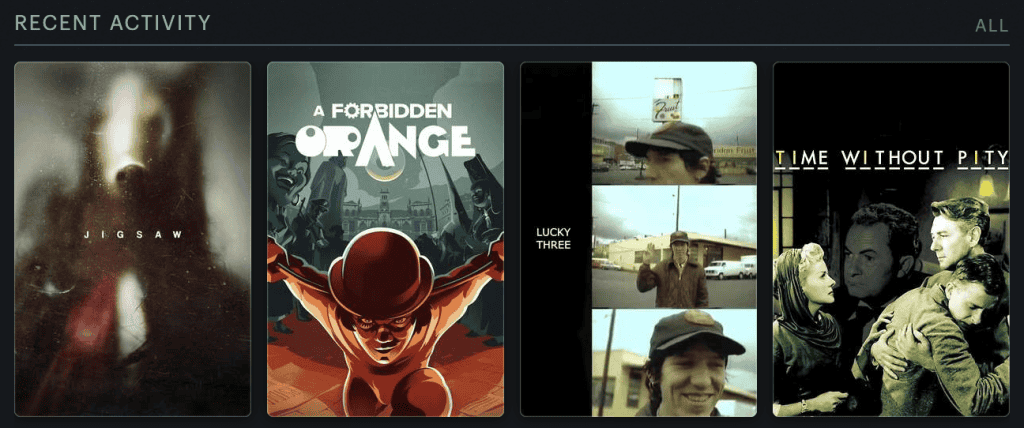
It’s time for another Letterboxd Friday where I share my most recent views on BlueSky as grabbed from my Letterboxd profile, and give just a few brief thoughts about them here on the blog!
Jigsaw (2017)
(HBO Max)
2017’s Jigsaw feels like it was a direct response to the previous installation, Saw 3D. That movie cranked all of the knobs of the series to 11, to the point that I remember entering the theatre as a fan of the Saw franchise and leaving the theatre feeling that it had crossed a threshold and the series was no longer for my taste. Jigsaw is definitely a movie that adds to the lore but tries to dial back the story to a smaller, more insular place closer to its roots.
I’ll be perfectly honest, I was about a third of the way through this movie before I realized that I had seen it before. If their desire was to take Saw back to its roots, they may have done a little bit too well at it, because it feels less like a chapter in the longer story and more like an outline that was supposed to be fleshed out later.
A Forbidden Orange (La naranja prohibida) (2021)
(HBO Max)
La naranja prohibida is a documentary about a piece of film history that I admit I wasn’t that familiar with: Spain’s at-the-time fascist, ultra-right government barred Stanley Kubrick’s adaptation of A Clockwork Orange from display in Spain, but the movie finally found its way to the Seminci in Volladid — a well-loved and heavily-attended film festival that had started out as a religious event before becoming a haven for movies that couldn’t be exhibited anywhere else in the country.
The English language version, A Forbidden Orange, is narrated by Malcolm McDowell, and he waxes poetic about how important the movie was not just to his career, but to his own understanding what it means to be an actor. At the same time, he delivers his voiceover more than a slight wink and nod to the fact that he knows he’s being a little bit self-indulgent.
Lucky Three: An Elliott Smith Portrait (1997)
(Criterion Channel)
“Lucky Three” is the sort of short film that I would love to see made about any and every artist, everywhere. It’s a film about the late Elliott Smith who was thrust into unwanted stardom when his song “Miss Misery” got placed in Gus Van Sant’s Good Will Hunting (1997), and whose tragic death as victim of an apparent suicide in 2003 has since become a point of contention amongst true crime aficionados. “Lucky Three” is a simple, no-frills film of Elliott, guitar in hand, performing three songs accompanied by silent footage taken around the town. There are no interviews, no narrator, no friends or family throwing in their two cents’ worth — just an artist at work on their art.
Time Without Pity (1957)
(HBO Max)
Film Noir is a subgenre usually associated with tough guys — no-nonsense, driven, haunted men stalking down dark streets, hats pulled low and ready to let their fists do the talking — even the insurance salesmen light matches with the sides of their thumbs and drink scotch on the rocks in their offices at night with light stretching across the room like prison bars from their window blinds. But Michael Redgrave’s David Graham, the protagonist of Time Without Pity, is a very different flavor of antihero. He desperately stumbles from one shaky lead to another, attracting disgust and disapproval along the way. It’s a performance that’s at once vulnerable and tense, a genuine ticking time bomb not for the danger that he represents, but for his own self-destruction that everyone sees coming.
An additional note: In the course of his investigation, Graham asks questions of a young, scantily-clad music hall dancer who seemed very familiar. So familiar that I had to look her up. She was, in fact, Joan Plowright — who I mostly knew from the period of her career after she had passed 60 years of age when her costuming was usually much more matronly.
Featured Image by Hennadii Kolchev from Pixabay
